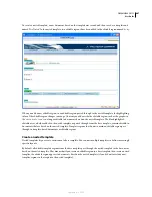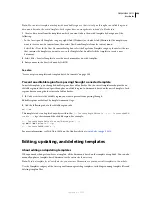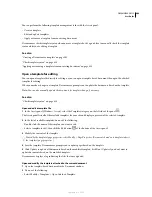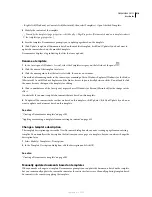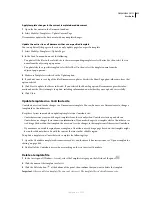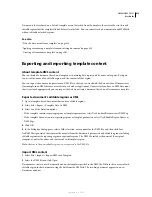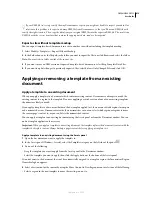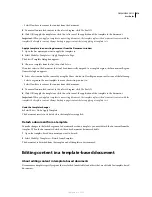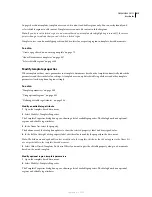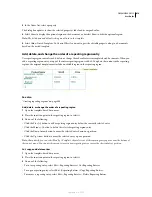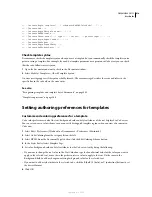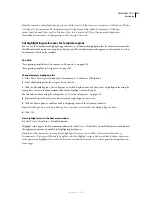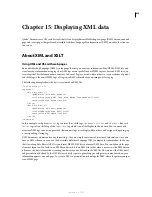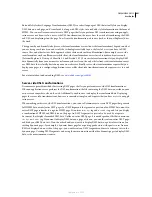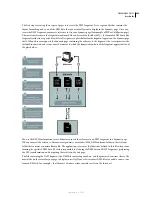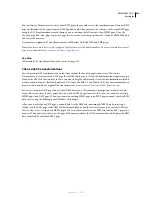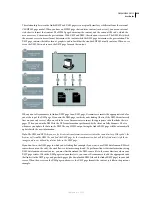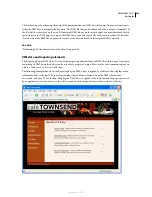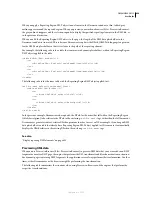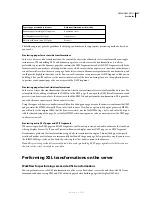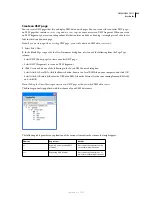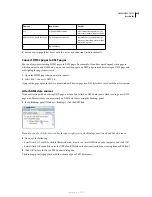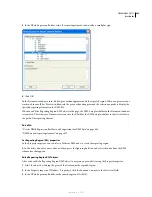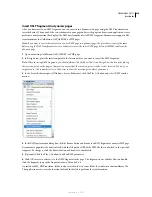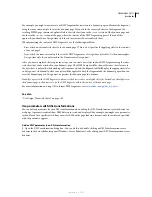
DREAMWEAVER CS3
User Guide
421
Extensible Stylesheet Language Transformations (XSLT) is a subset language of XSL that actually lets you display
XML data on a web page, and “transform” it, along with XSL styles, into readable, styled information in the form of
HTML. You can use Dreamweaver to create XSLT pages that let you perform XSL transformations using an appli-
cation server or a browser. In a server-side XSL transformation, the server does the work of transforming the XML
and XSL, and displaying it on the page. In a client-side transformation, a browser (such as Internet Explorer) does
the work.
The approach you ultimately take (server-side transformations versus client-side transformations) depends on what
you are trying to achieve as an end result, the technologies available to you, the level of access you have to XML
source files, and other factors. Both approaches have their own benefits and limitations. For example, server-side
transformations work in all browsers while client-side transformations are restricted to modern browsers only
(Internet Explorer 6, Netscape 8, Mozilla 1.8, and Firefox 1.0.2). Server-side transformations let you display XML
data dynamically from your own server or from anywhere else on the web, while client-side transformations must
use XML data that is locally hosted on your own web server. Finally, server-side transformations require that you
deploy your pages to a configured application server, while client-side transformations only require access to a web
server.
For a tutorial about understanding XML, see
www.adobe.com/go/vid0165
.
Server-side XSL transformations
Dreamweaver provides methods for creating XSLT pages that let you perform server-side XSL transformations.
When an application server performs the XSL transformation, the file containing the XML data can reside on your
own server, or anywhere else on the web. Additionally, any browser can display the transformed data. Deploying
pages for server-side transformations, however, is somewhat complex, and requires that you have access to an appli-
cation server.
When working with server-side XSL transformations, you can use Dreamweaver to create XSLT pages that generate
full HTML documents (entire XSLT pages), or XSLT fragments that generate a portion of an HTML document. An
entire XSLT page is similar to a regular HTML page. It contains a
<body>
tag and a
<head>
tag, and lets you display
a combination of HTML and XML data on the page. An XSLT fragment is a piece of code, used by a separate
document, that displays formatted XML data. Unlike an entire XSLT page, it is an independent file that contains no
<body>
or
<head>
tag. If you want to display XML data on a page of its own, you would create an entire XSLT page,
and bind your XML data to it. If, on the other hand, you wanted to display XML data in a particular section of an
existing dynamic page—for example, a dynamic home page for a sporting goods store, with sports scores from an
RSS feed displayed on one side of the page—you would create an XSLT fragment and insert a reference to it in the
dynamic page. Creating XSLT fragments, and using them in conjunction with other dynamic pages to display XML
data, is the more common scenario.
September 4, 2007

